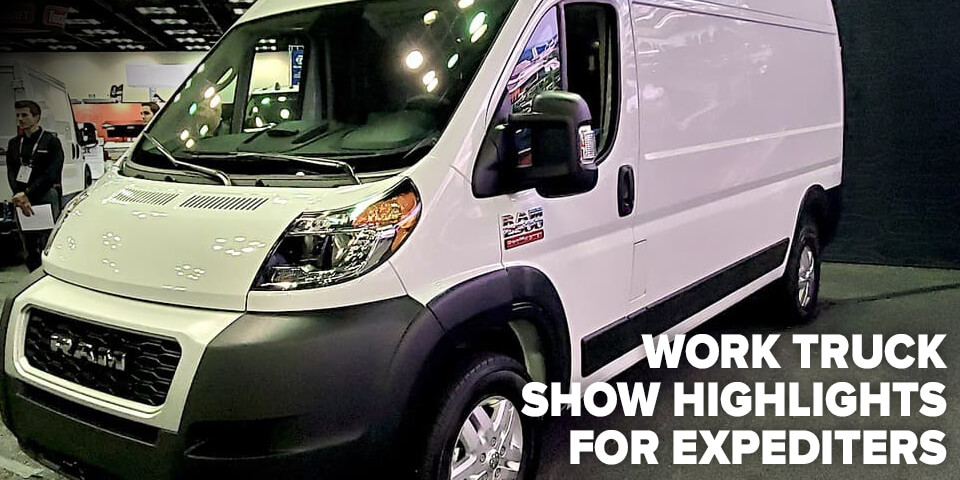In The News

Work Truck Show Highlights for Expediters
In early March, I attended several press conferences at the NTEA Work Truck Show (WTS) in Indianapolis, Ind.
WTS focuses primarily on vocational fleet applications—such as vehicles and equipment for the construction, field service, and local pickup and delivery markets. But there were important announcements that could impact the expedited trucking industry, as well, in the next couple of years.
So, here are three highlights from WTS that expedite owner-operators and fleet owners should have on their radar.
All-Electric Ford Transit Coming in 2022
Ford announced that it would start production of an all-electric full-size Transit cargo van for the 2022 model year.
"Commercial vehicles are a critical component to our big bet on electrification," said Jim Farley, chief operating officer, Ford Motor Company. "As leaders in this space, we are accelerating our plans to create solutions that help businesses run better, starting with our all-electric Transit and F-150. This Ford Transit isn't just about creating an electric drivetrain; it's about designing and developing a digital product that propels fleets forward."
The company would not comment on the estimated battery range between charges, payload capacities, and pricing. So, it’s unclear whether the early battery-powered Transits will meet the performance requirements for expedite applications.
The all-electric Transit will also offer advanced safety systems as standard equipment, such as Pre-Collision Assist with Automatic Emergency Braking plus Pedestrian Detection, Forward Collision Warning, Post-Collision Braking, Lane-Keeping System and auto high-beam headlamps.
RAM Promaster Adding Advanced Driver Assist Systems for 2021 RAM announced that it’s adding these critical safety technologies to the Promaster van lineup for the 2021 model year.
RAM announced that it’s adding these critical safety technologies to the Promaster van lineup for the 2021 model year.
- Forward collision warning and active emergency braking. This system uses forward-looking radar to avoid or mitigate the highest energy of collisions, where the risk of vehicle damage and injury is highest.
- Blindspot monitoring. Sensors inside the rear facia detect objects from the side and rear of the vehicle, alerting the driver of any obstruction in their blindspot.
- Rear cross-path detection. When the vehicle operates in reverse, the rear sensors determine whether objects are approaching from either side of the vehicle and alert the driver to stop.
- Crosswind assist. Cargo vans present a large surface area for high winds, increasing rollover risk. So, RAM is integrating Crosswind Assist capabilities in the van’s standard electronic stability control. This way, in high crosswind situations, the system will automatically intercede and keep the van stable and upright on the driver’s behalf.
- Digital rearview mirror. A rearview mirror is useless in most cargo van applications because your view is obstructed by either a cargo partition (directly behind the driver and passenger seats), solid rear doors, or cargo that blocks the back windows. That's where RAM's new digital rearview mirror comes in. It uses a rear-mounted high-resolution camera to give you the same visibility in a cargo van that you would have in a typical passenger car.
WALTCO Offering an Integrated Liftgate Imagine a liftgate that not only served as a lifting platform but could also replace the traditional rear cargo door on the box of your expediter straight truck.
Imagine a liftgate that not only served as a lifting platform but could also replace the traditional rear cargo door on the box of your expediter straight truck.
That’s what WALTCO presented with its new FM1000 integrated aluminum liftgate.
The company contends that the integrated aluminum liftgate reduces the weight of the box—and, therefore, increases the truck’s overall payload capacity—because it replaces the body’s rear frame and door with a lighter-weight option.
The FM1000 has been selling in Europe for a few years and will be available in the U.S. market this year.
The platform offers a 1,000-lb. platform capacity and includes safety features, such as integrated handrails and cart stops, which helps you keep control of any load that’s on wheels.
